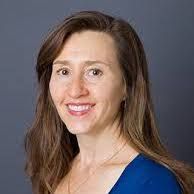Brief Behavioral Therapy Improves Care for Adolescent Depression and Anxiety
BBT was compared to assisted referral to community outpatient mental health care.
Frances L. Lynch, PhD (Kaiser Permanente)

While anxiety and depression are extremely common and comorbid for adolescents, they often can go untreated.
However, 1 option to improve this treatment gap is pediatric transdiagnostic interventions.
A team, led by Frances L. Lynch, PhD, MSPH, Center for Health Research, Kaiser Permanente Northwest, evaluated the cost-effectiveness for pediatric transdiagnostic brief behavioral therapy (BBT) programs for anxiety and/or depression compared to assisted referral to community outpatient mental health care (ARC).
The Analysis
In the economic evaluation, the investigators performed an incremental cost-effectiveness analysis from the societal perspective on 185 adolescents with a mean age of 11.3 years old. The researchers used data from a recent randomized clinical trial of adolescents with full or probable diagnosis of anxiety or depression.
Each participant was recruited from pediatric clinics in San Diego or Pittsburgh between October 6, 2010 and December 5, 2014.
The researchers randomized each individual to received either BBT (n = 95) or ARC (n = 90). The brief behavioral therapy program consisted of 8-12 weekly 45-minute sessions of behavioral therapy delivered in pediatric clinicians by master’s level therapists, while the ARC therapy program consisted of personalized referrals to mental health care and telephone calls to support access to care.
The researchers sought main outcomes of anxiety-free days, depression-free days, quality-adjusted life-years (QALYs), and costs based on incremental cost-effectiveness ratios from intake through the 32-week follow-up. The team used a cost-effectiveness acceptability curve for QALYs to assess the probability that the target therapy was cost-effective compared to ARC over a range of amounts that a decision-maker might be willing to pay for an additional outcome.
Encouraging Results
Overall, the patients who received BBT had experience substantially more anxiety-free days (difference, 28.63 days; 95% CI, 5.86-50.71 days; P = .01) and QALYs (difference, 0.026; 95% CI, 0.009-0.046; P = .007) compared to the group that received ARC therapy.
This group also experienced more depression-free days difference, 10.52 days; 95% CI, −4.50 to 25.76 days; P = .18). However, this difference was not deemed statistically significant.
In addition, the mean incremental cost-effectiveness ratio was -$41,414 per QALY (95% CI, −$220 601 to $11 468).
The cost-effectiveness acceptability curve analysis indicated that the probability that BBT would be cost-effective compared with ARC at 32 weeks was 95.6% at a recommended willingness-to-pay threshold of $50,000 per QALY.
“In this economic evaluation, BBT in primary care was significantly associated with better outcomes and a greater probability of cost-effectiveness at 32 weeks compared with ARC,” the authors wrote. “The findings suggest that transdiagnostic BBT may be associated with improved youth anxiety and functioning at a reasonable cost.”
Approximately 30% of young individuals experience anxiety, depression, or both by the end of puberty, meaning they can face significant long-term negative outcomes such as impairment in relationships, poor academic performance, reduced quality of life, increased risk of anxiety and depression in adulthood, teen pregnancy, substance use, and self-harm.
The study, “Cost-effectiveness of Brief Behavioral Therapy for Pediatric Anxiety and Depression in Primary Care,” was published online in JAMA Network Open.